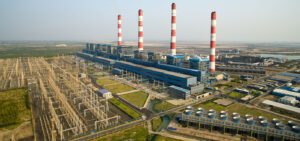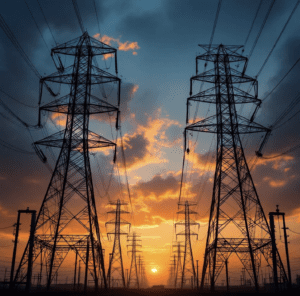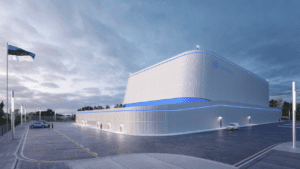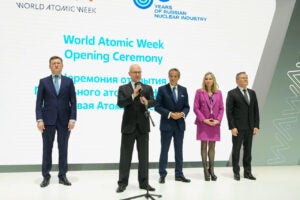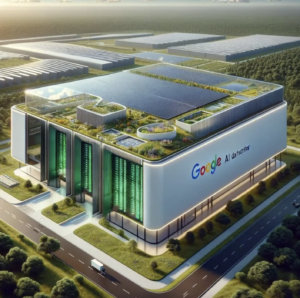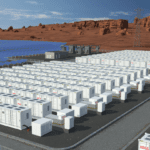Managing demand on the power grid, at best a never-ending balancing act between generation and load, has become an increasingly complex and challenging responsibility. Along with the urgent need to reduce carbon-based energy generation, consumer demand for energy is continuously growing and shifting. As the energy landscape evolves, power providers across the country, from utilities to retail energy providers, are facing a combination of factors that present significant challenges.
New distributed energy resources, or DERs, are being developed and integrated at an ever-increasing pace, with electric vehicles and renewable generation assets (and their variability) being brought online faster than previously predicted. Indeed, solar photovoltaic and onshore wind are now the cheapest sources of new-build generation for at least two-thirds of the global population, according to Bloomberg New Energy Finance (BNEF).
Despite the impacts on new project deployments and the renewables supply chain due to the COVID-19 pandemic, renewable capacity additions this year are set to total 167 GW globally, according to the International Energy Agency’s Renewable Energy Market Update report. Overall global renewable power capacity is expanding and will grow by 6% in 2020.
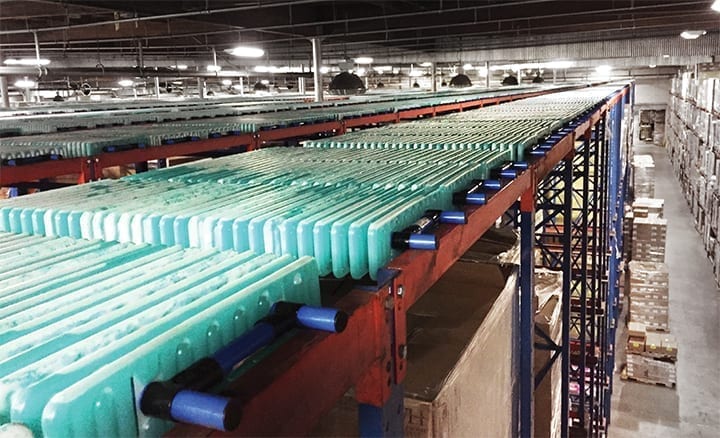 |
|
1. Commercial and industrial (C&I) refrigerated facilities that serve food businesses have the highest power demand per square foot of any industrial load. These C&I refrigeration sites also consume more electricity from the grid than any usage category, other than lighting. Courtesy: Viking Cold Solutions |
All these factors make it more challenging for utilities to meet and manage demand when and where it is needed. This is particularly true when considering food businesses with commercial and industrial (C&I) refrigerated facilities (Figure 1), which have the highest demand per square foot of any industrial load. C&I refrigeration sites also consume more energy from the grid than any other usage category other than lighting. Significantly, energy often accounts for up to 70% of the total electric bill for C&I cold storage companies.
This food supply sector, also referred to as the “cold chain,” is designated as critical infrastructure and is of vital importance—particularly during the type of public health emergency the world has faced over the past several months, and will continue to face until the pandemic is under control.
C&I Demand Management
There are several factors that come into play when managing C&I demand, such as time of use, capacity, transmission, and distribution, all of which have an effect on the total cost of electricity. Variable generation resources such as wind and solar have made grid demand management even more difficult.
C&I demand reduction programs have been one effective method to help manage peak demand while DERs continue to grow as an integral part of the demand equation. Each DER provides either flexibility to better manage peak demand periods, or efficiency to lower overall consumption, but few technologies can provide both. Some projects combine DERs to maximize results from demand management programs.
 |
|
2. Facilities that store food need to run their refrigeration systems almost non-stop to minimize temperature variations and protect the food. Thermal energy storage (TES) systems allow for more efficient use of energy within the facility, giving building owners the benefits of lower energy costs. Courtesy: Viking Cold Solutions |
As outlined above, one crucial C&I category that has been difficult to adequately address with traditional demand management tools is refrigerated and cold storage facilities. These facilities (Figure 2) store food and run their refrigeration systems nearly non-stop to minimize temperature variations and protect the food. They include thousands of large frozen food warehouses (from 5,000 to more than 200,000 square feet) owned by food processing companies, food service distributors, large grocery chains, food banks, and third-party logistics providers, as well as hundreds of thousands of walk-in freezers (from 100 square feet to more than 1,000 square feet) found inside grocery stores, schools, hotels, and restaurants.
Locations with refrigeration can benefit significantly from smarter energy use. As demand management techniques and programs have developed, C&I refrigeration facilities have often been targeted. The results, however, have been limited due to their continuous energy demands and sensitivity to temperature fluctuations.
When included in demand response programs, for example, these facilities are often unable to respond to the utility or grid operator notice for demand reduction. Where locations permit, a few cold storage facilities have taken advantage of their large rooftops by adding solar panels. However, without an on-site storage resource that can adequately offset demand requirements of refrigeration equipment, the flexibility to participate in programs is limited, and carries risk.
|
Phase Change Material for Thermal Energy Storage Phase Change Material (PCM) is a substance with a high latent heat of fusion that remains near a constant temperature while storing and releasing large amounts of energy. During its transition between solid and liquid states, Viking Cold Solutions PCM absorbs up to 85% of heat infiltration and maintains more stable temperatures to better protect food products. This environmentally friendly, food-safe PCM is engineered by Viking Cold Solutions to freeze and thaw at the desired temperature setpoint of the customer’s freezer. The technology is being used at a frozen food distribution center owned and operated by Dreisbach Enterprises in Richmond, California. Viking Cold Solutions’ patented thermal energy storage (TES) system was installed in a 93,000-square-foot low-temperature freezer, part of a facility also comprised of medium-temperature refrigerated storage, dry storage, and office space. Refrigeration for the low- and medium-temperature cold storage rooms was provided by a central ammonia refrigeration plant composed of multiple-staged screw compressors and water-cooled condensers. The installation was part of a measurement and verification (M&V) study of Viking Cold Solutions’ TES technology installed in an industrial low-temperature cold storage warehouse. The objectives of the M&V study were to determine the effectiveness of TES on energy efficiency and temperature stability with an ammonia-based refrigeration system. The M&V study concluded that TES provided a 43% decrease in peak period consumption and a 29% decrease in peak demand while improving overall temperature stability by 50% in a low-temperature warehouse. |
Until recently there was a void of application-specific energy storage technologies for C&I refrigeration that provide significant capacity and discharge duration (see sidebar). Conventional efficiency technologies that reduce consumption such as LED lighting, variable frequency drives, and building envelope enhancements, make only marginal impact or have already in large part been implemented.
 |
|
3. There are many advantages to using TES systems for cooling. More efficient refrigeration means lower energy costs. Using off-peak electricity to store energy for use during peak hours helps reduce the daytime peaks of power consumption. Courtesy: Viking Cold Solutions |
Recently, utilities and facility managers have begun incorporating long-duration energy storage solutions (four or more hours of discharge) designed specifically for low-temperature C&I refrigeration. These behind-the-meter thermal energy storage (TES) systems (Figure 3) have demonstrated their ability to give utilities greater control over the peak electricity demands of refrigeration for up to 13 hours per day, while offering cold storage facility owners the benefits of lower energy costs, increased resiliency for food quality assurance, reduced emissions, and—something not many storage technologies offer—efficiency.
Additionally, because these systems are non-mechanical and designed exclusively for refrigeration applications, TES stores more energy and discharges for many more hours, has a system life of more than 20 years, and has a levelized cost of energy (LCOE) of less than $0.02 per kWh (about one-tenth that of lithium-ion batteries).
For C&I Flexibility and Efficiency, Timing is Good
In many states, such as California and others in the Northeast, utilities have implemented time-of-use electricity tariffs that provide powerful incentives for C&I cold storage operators to shift their electricity use to off-peak hours. Some operators have resorted to using a technique known as flywheeling; sub-cooling the food below optimal temperatures, then cycling off refrigeration equipment during expensive time intervals and letting the temperatures increase. However, cycling food like a battery comes at a cost to food quality and actually increases overall electricity consumption.
TES systems provide time-of-use flexibility with much greater capacity and much longer discharge cycles than lithium-ion batteries. For example, at Dreisbach Enterprises, a 93,000-square-foot industrial facility in the San Francisco Bay Area, the owners found that over the past few years TES provides sufficient energy storage to shed 300 kW to 500 kW for 13 hours per day, six days a week. This reduction in demand is accomplished while also improving temperature stability by 50%, and thus avoids using the food as the battery when flywheeling.
The same facility also saw a 43% decrease in consumption (efficiency gains) during its 13-hour peak period, without using more energy during the remaining 11 hours of the day. In fact, total freezer energy consumption was reduced by 35%.
TES technology improves an existing C&I refrigeration system’s efficiency from 10% to 20%. These added efficiencies are the result of several factors. During the periods when refrigeration is active, the systems run at the designed optimal efficiency, similar to highway fuel efficiency in an automobile. Also, systems run more during evening hours when ambient temperatures are lower for maximum condensing efficiency.
 |
|
4. TES cells located near the top of the warehouse can provide energy and cost savings. The cells in this configuration absorb most of the heat infiltration, and consolidate it near the top of the room, directly in the refrigeration airflow. Courtesy: Viking Cold Solutions |
Additional efficiency is achieved because the TES cells, rather than the food, absorb up to 85% of the heat infiltration and consolidate it near the top of the room (Figure 4), directly in the refrigeration airflow. Lastly, it requires less refrigeration to remove the heat from the TES cells and refreeze them, because the heat transfer rate is eight times faster than that of frozen food packaged in an insulated box and spread out across an entire room. All of this means the same Btus of heat can be removed using fewer kWh.
Utilities and Customers Banking Big Savings
On the U.S. East Coast, eight behind-the-meter TES systems were installed as part of a demand management program directed by local utility Eversource. These systems store and facilitate the management of about 1.3 MW. The average size of the cold storage facilities in the program is roughly 50,000 square feet, with the largest being a 157,000-square-foot Sysco distribution facility.
One location, The Greater Boston Food Bank, saw a 75% reduction in energy use during targeted peak hours and substantial cost savings at its distribution center. The system has reduced electricity consumption while improving temperature stability inside the food bank’s freezer. The energy cost savings delivered by the TES system will allow the food bank to provide more than 10,000 additional meals per year.
There are also many tangible benefits for the utility. TES systems do not require a grid interconnection, and install very quickly with no interruptions to daily business activities. For example, the Eversource projects in Massachusetts averaged 127 days from agreement to commissioning, and to reduction of demand from the grid.
Additionally, these flexible TES systems can be used for a broad array of demand management programs such as peak-shaving, permanent load shift, demand response, capacity reduction, efficiency, and more. The cloud-based optimization of the controls delivers data visibility, validation of energy usage, and improved facility operations. Flexible charge and discharge times accommodate seasonal or shifting peak demand targets across all regions, whether addressing summertime peaks, the winter peaks of New England, or the so-called “duck curve” of California.
Additional TES Benefits for C&I Operators
Beyond the energy and cost savings, there are several other facility benefits. TES systems do not require any additional warehouse real estate for the components. Modules of thermal cells are typically installed easily in the unused space of the existing storage racks (Figure 5). Installations can be completed in extremely quick timeframes with minimal disruption to business operations.
 |
|
5. TES components are usually installed in the unused space of existing storage racks. Courtesy: Viking Cold Solutions |
The non-mechanical thermal energy storage technology has an operating life of more than 20 years, with little to no maintenance and no performance degradation. The system also provides resilience and risk mitigation by maintaining stable temperatures three times longer during power outages or equipment failures. Because TES stores energy in the form of cold inside freezers, facility operators can safely reduce grid-sourced energy for extended periods of time without risk to their product. They also receive the ancillary benefits of reduced run-time and maintenance for their refrigeration equipment, which extends its operating life and reduces environmental impact.
The energy transition is underway. Decentralization and decarbonization are driving the need for increased flexibility, resiliency, and sustainability on the ever-evolving power grid. These requirements are now being amplified by the global pandemic, which is accelerating the shift to more innovative and automated solutions. Addressing these market needs with long-duration thermal energy storage allows utilities, energy providers, and refrigeration customers to better manage demand with economically compelling and sustainable technology. ■
—Collin Coker is vice president of Sales and Marketing at Houston, Texas-based Viking Cold Solutions, a thermal energy management company focused on making the world’s cold storage systems more efficient, flexible, and resilient.


